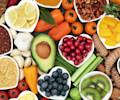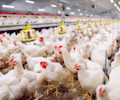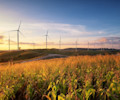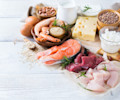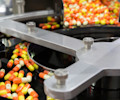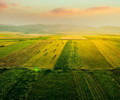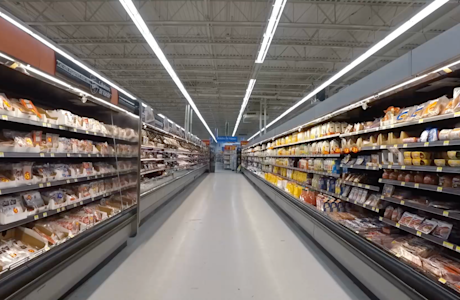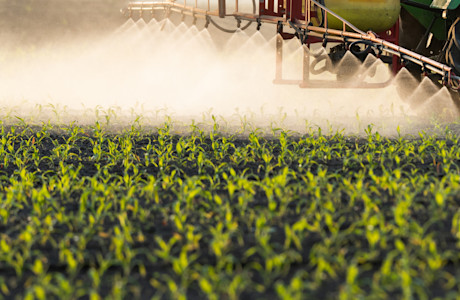What is ‘Intensive animal agriculture’ or ‘Factory’ farming?
‘Factory farming or ‘Intensive animal agriculture' refers to the globally adopted farming system that involves crowding large groups of livestock into confined indoor spaces, such as stalls or cages. The USDA defines any farm with more than 1,000 cattle, 2,500 pigs or 125,000 chickens as a Concentrated Animal Feeding Operation (CAFO) or intensive farming system. In the EU, officials have defined intensive farms as those carrying more than 40,000 chickens or 2,000 pigs.
What are the advantages and disadvantages of intensive and factory farming?
The model of factory farming has, over the years, been optimised to minimise costs and maximise profit. The advantages of this are that large supplies of meat can be produced and supplied very quickly, at very low cost, all year round. Automated processes also simplify work for farmers.
Whilst this system has been honed to optimise short-term profit, there are numerous disadvantages to having factory farming as our blueprint farming model. Some of these disadvantages include mass environmental damage, high levels of pollution, compromised animal welfare, as well as increased public health risks such as zoonotic disease and antibiotic resistance.
How we approach the future of factory farming is important. Intensive farming or factory farming has become the norm, with an estimated 70% of UK farm animals now raised in this system, and as much as 99% of US farm animals. Despite this being our main food production model, the negative environmental and social repercussions are now emerging at pace.
How does factory/intensive farming affect the environment?
The impact of factory farming on the environment is monumental and completely unsustainable to supply long-term demand. It presents major environmental risks, including climate change, deforestation, biodiversity loss, natural hazards, water scarcity and air pollution.
Factory farming is highly intensive in its resource consumption. It’s responsible for 14.5% of total greenhouse gas emissions, clocking up higher emission levels than the combined output of all the world’s planes, trains and cars put together. Producing feed for livestock also drains a third of the total annual global water withdrawals.
Factory farming also contributes to destructive levels of deforestation, with one report estimating that 70% of deforestation in the Amazon basin can be attributed to the beef industry. Not only does this destroy our planet’s ‘lungs’, which absorb harmful CO2 emissions, it also breaks down our shield against future zoonotic disease risk.
How does factory farming affect human health?
The health risks that exist in the intensive farming sector have become exposed since the outbreak of the COVID-19 pandemic, with thousands of workers at meatpacking plants across the globe being disproportionately affected by the coronavirus. Close working quarters and unsanitary working conditions have fostered outbreaks across the world, with Germany facing a spike in their national cases as a result of meat-plant outbreaks.
The cramped conditions, which are characteristic of factory farms, also facilitate the creation of new zoonotic diseases. Large numbers of animals packed in such close quarters provide a breeding ground for harmful pathogens to spread and create pandemics. COVID-19 is the latest and most significant in a long string of animal-borne diseases, such as swine flu, avian flu, SARS, Ebola, MERS, Zika and Dengue Fever.
As we’ve seen from the COVID-19 pandemic, the economic reverberations are huge. Current predictions for livestock sector losses are forecast to be around $20 billion. Despite this, the majority of meat companies remain unprepared for future pandemics. FAIRR’s latest report ‘An Industry Infected’, shows that a staggering 73% of companies assessed remain at high risk of fostering future pandemics.
Finally, the overuse of antibiotics in factory farms has also been shown to contribute to the development of antibiotic-resistant bacteria. Antibiotic resistance is one of the biggest threats facing modern society, already estimated to be the cause of 700,000 deaths per year globally. Uncontrollable levels of antimicrobial resistance (AMR) make us vulnerable to drug-resistant bacteria, reducing our ability to fight deadly diseases.
FAIRR tools and resources for investors on intensive and factory farming risk
The Coller FAIRR Index identifies 60 of the largest animal protein producers listed on the global capital markets, with a combined market cap of close to $300bn in 2017.
The Coller FAIRR Climate Risk Tool helps investors to explore the ESG risks and opportunities presented in their portfolios.
The FAIRR Initiative’s report, An Industry Infected, helps investors understand the risks of zoonotic disease transmission in the intensive farming sector.
FAIRR insights are written by FAIRR team members and occasionally co-authored with guest contributors. The authors write in their individual capacity and do not necessarily represent the FAIRR view.


